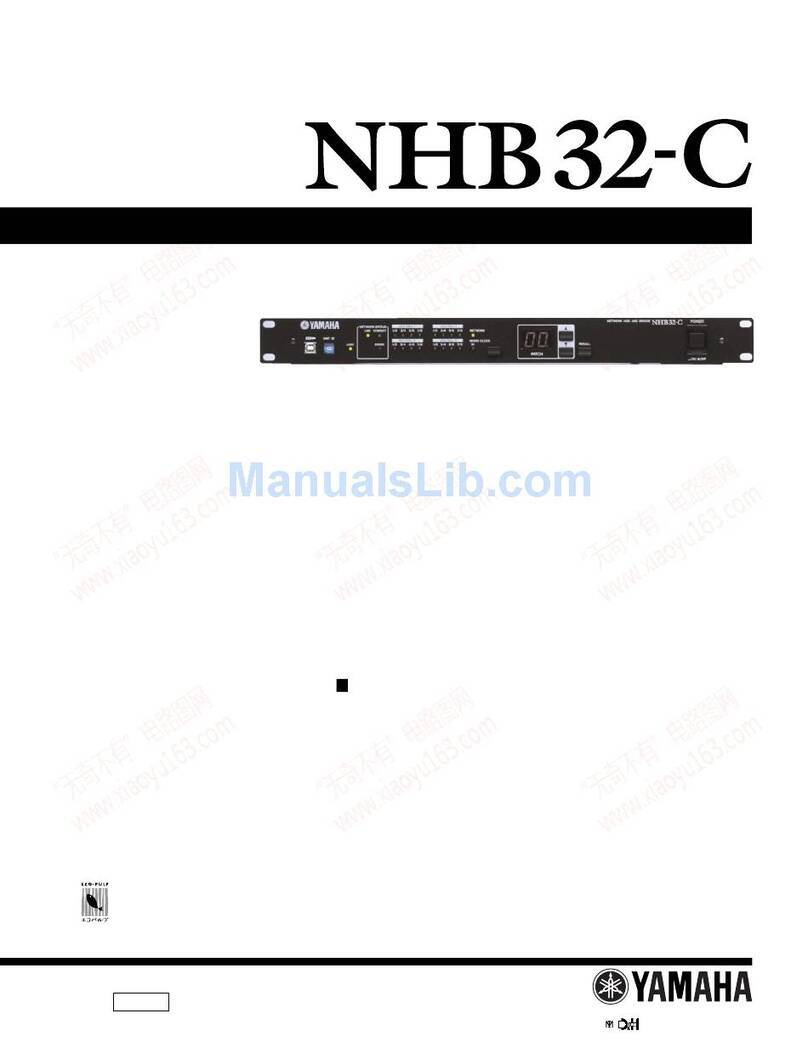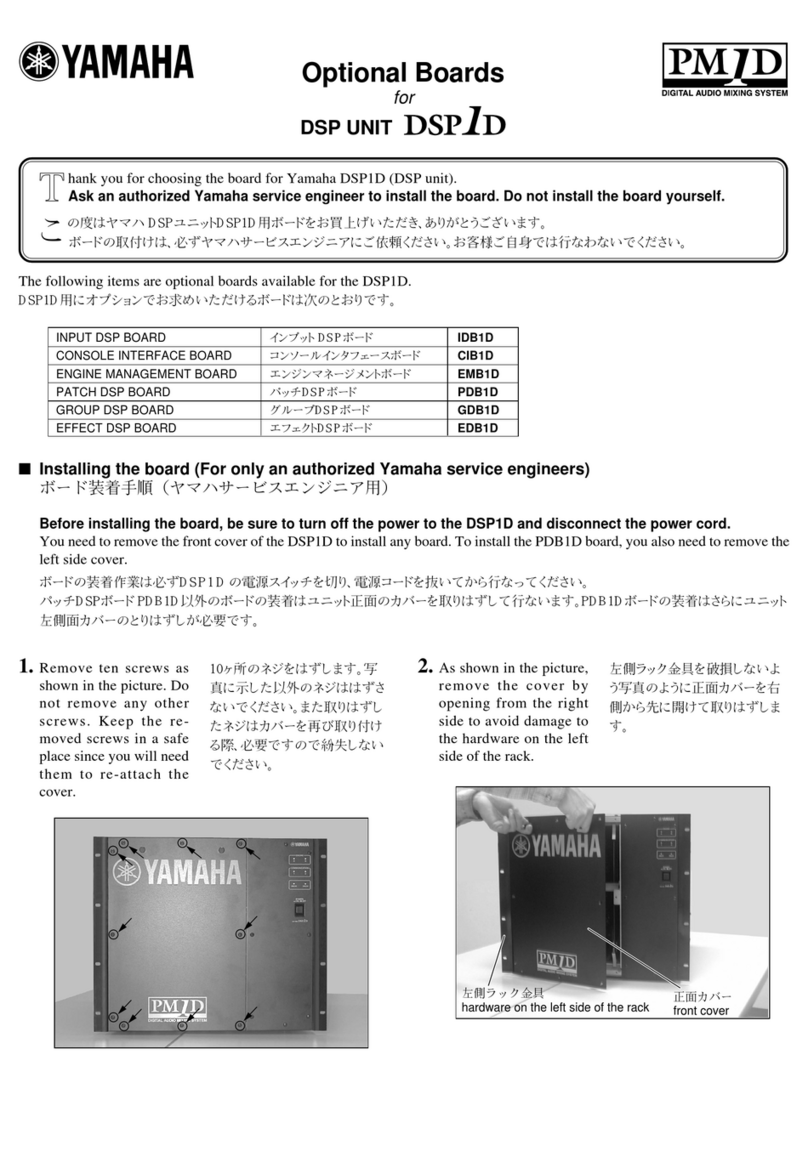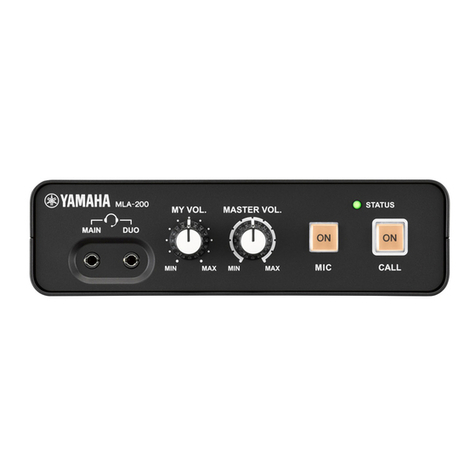
Notes regarding the current version
• If using 4.5 m cables to make connections, no special knowledge is required when connecting up to 16
devices. However for larger systems, further understanding of connections is required, such as how connec-
tions can be branched.
• At present, it is not possible to create systems of 64 or more devices. In the near future, it will be possible to
use devices called “bridges” to expand this to 63 x 1023 devices. However in this case as well, a certain
amount of knowledge will be required.
• In the current version, even if 63 or fewer nodes are connected, there is no limitation regarding reception of
realtime data such as audio and MIDI. However, the number of nodes that can transmit data is limited to
approximately five devices.
There is no limitation on the number of nodes that can transmit non-realtime data such as file transfers by
IEEE 1394 devices. (The current version of mLAN does not support file transfer for mLAN devices.)
Troubleshooting
The following table provides troubleshooting hints for some common problems. Before calling for professional
service, refer to the troubleshooting advice below to see if you can find and correct the cause of the problem.
Bus does not start up
• A loop connection may have been created. Check the
cable connections.
Node is not displayed
• The power of an intervening node may be off, or a cable
may be disconnected. If two or more CD8-mLAN cards
are installed in an 02R, connections are also required
between these cards.
• PC card hot plugging on the PowerBook is not supported.
If you insert a new PC card, you must restart the system. If
there are multiple 1394 adapters, you must specify the
adapter.
mLAN plug is not displayed
• The reception plug (input plug) of a Macintosh is not visi-
ble from other nodes. Make connection settings on the
Macintosh.
• For Direct mode on the CS6x/CS6R/S80, there is no
reception plug (input plug).
Connection cannot be made
• A connection may have already been specified for the
receiving device plug.
• The bus traffic may be approaching 100%.
Connection cannot be restored
• The connection may have been overwritten. Or, you have
may performed Factory Set or mLAN Initialize. These
operations will initialize the connection.
• The bus traffic may be approaching 100%.
• You may have switched devices. The connection will not
be restored if you switch to a different hardware unit,
even if the model is identical.
No sound
• Is a word clock being supplied? Does a word clock master
node exist (if the word clock source is “ext.”).
• Is the Digital In of the mLAN8P connected? Is the Optical/
Coaxial setting correct?
• Has mixer muting (channel off) been defeated on the
mLAN8P/mLAN8E?
• The mLAN signals that can be received simultaneously by
one Macintosh are limited to the signals transmitted from
a single mLAN device. It is not possible to receive a total
of two or more channels transmitted from multiple mLAN
devices. Multiple channels transmitted from a single
mLAN device can be received simultaneously. Even if OMS
settings for multiple ports have been made, reception is
limited to signals transmitted from a single mLAN device.
Can’t operate the panel
• The mLAN Mixer may be connected. It is not possible to
operate the mLAN Mixer and the panel simultaneously.
Can’t receive/transmit MIDI
• In order to receive/transmit MIDI on the 03D, rear panel
cable connections (TO HOST cable) and DIP switch set-
tings are required.
• On the A4000/A5000 or CS6x/CS6R/S80, you must
switch between the conventional MIDI connectors and
the mLAN MIDI.
• The mLAN signals that can be received simultaneously by
one Macintosh are limited to the signals transmitted from
a single mLAN device. Even if OMS settings for multiple
ports have been made, reception is limited to signals
transmitted from a single mLAN device.
Sound is interrupted
• The cable may have been disconnected from a port
whose LED is lit red, or the power of that device may have
been turned off.
• A bus to which multiple devices are connected may have
been joined.
• The bus may contain a node with a device of an older for-
mat (IEEE 1394 - 1995), such as an older DVCam.
• On the Macintosh, numerous applications may be run-
ning, or you may be attempting to transmit numerous
channels of audio. The sound may be interrupted if a
heavy processing load is being placed on the Macintosh.
Something is wrong with the sound
• Is the word clock setting correct? If the word clock is not
synchronized correctly, the audio quality may be affected.
Also, the A4000/A5000 and CS6x/CS6R/S80 support only
44.1 kHz.
Macintosh does not synchronize with other devices
• The Macintosh cannot be the slave of other devices.
Sound is heard when you disconnect a cable
• A “blip” sound may be heard from a device receiving
mLAN audio when you disconnect the cable from the
device that is transmitting that signal. If this occurs, either
pause transmission/reception or lower the volume before
disconnecting the cable.
mLANGuidebookSupplementaryMaterials






























